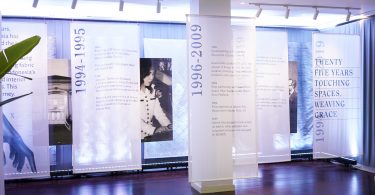 Upon graduating with an architecture degree from Universitas Pancasila, Novriansyah Yakub (or Riri) began his career as a visual editor in an architectural magazine from 2004 to 2010. In 2008, he founded his own architectural studio, Atelier Riri, a firm that looks at architecture and creative arts in the context of the surrounding environment.
Upon graduating with an architecture degree from Universitas Pancasila, Novriansyah Yakub (or Riri) began his career as a visual editor in an architectural magazine from 2004 to 2010. In 2008, he founded his own architectural studio, Atelier Riri, a firm that looks at architecture and creative arts in the context of the surrounding environment.
How would you describe your journey in architecture and what you have learnt from it?
As an architecture student, I learned how to organise and develop plans to broaden my personal potential and those of people around me, so that the knowledge I have is able to bring happiness to many people.
I am one of those architects who did not plunge straight into the industry as a direct practitioner. For six years, I worked as a magazine visual editor in Indonesia, and this experience has given colour to my designs. Through my career, I have learned a lot—from giving the right instructions, communicating well with others and learning from many successful people.
In your opinion, what are the main problems related to architectural design and projects in Indonesia today?
Many designs cannot be accommodated by ordinary people because of cost, and there is limited insight about the importance of design innovation towards the development of an era.
Prefab technology is one of the industry innovations. How has Atelier Riri used this technology in its projects?
Atelier Riri has its own character and identity, including in the selection of materials, especially for high-end projects. But we do use prefab technology for the design needs of clients from the middle segment.
We have worked on the RS25 and Kiyakabin projects in Bali. These projects use pre-existing materials (containers) that are transformed into rooms and combined into a modular container development. We have designed using a panel slab that applies the Cremona principle, where the top is a semi-prefab fibre cement panel. We have also used fibre-cement walls that are prefabricated and directly installed into homes. In addition, we are developing the use of sandwich panels, which are used in two-storey houses.
What are the advantages and disadvantages of using prefab technology?
Digital technology and machinery have become affordable, so it can now compete, cost-wise, with conventional construction techniques. The technology can transform designs into pre-fabricated modules that are adjusted to the site and environmental context. Prefabricated panel systems are useful in Indonesia because they are lighter, more economical and efficient for use in the dense urban centres.
However, there may be some limitations in terms of creativity and the use of other materials. I hope that the prefab industry in Indonesia can further develop the creative side in terms of materials used, for better quality of design to create the characteristics of tropical dwellings.
To read the whole issue of Construction+, please download the Construction Plus App on the App Store or Google Play.

 Malaysia
Malaysia Hong Kong
Hong Kong Singapore
Singapore Tiếng Việt
Tiếng Việt ประเทศไทย
ประเทศไทย







